Neck Strain Symptoms & Treatment
When neck pain and muscle soreness has been present for some time, often it can be traced to factors which strain muscle such as poor posture. Correcting such factors along with appropriate pain medication, self massage and heat directed to specific areas of the neck muscles may provide relief. Often, these muscles are involved in neck related headaches.
Below are some examples of the most common found areas of neck strain along with factors that stress the areas and ways to treat and correct them. The “X” are the areas of strain and the red areas outline the areas of referred pain, so treatment is directed to the “X” areas. Click on the picture to enlarge for a better view.
Strain is a term commonly used to describe many problems. Technically, it is a tearing of a muscle. The tear is usually described in grades and can be anywhere from mild to completely torn – a condition requiring surgery.
A strain is a type of soft tissue injury similar to a cut on your finger. There is tearing of the tissue – remember, the classic definition of a neck strain is a tearing of the muscle. There will be pain and inflammation. On your finger, you put a band-aid on it and let it form a scab. When the scab falls off, you will have scar tissue, depending on the extent of the cut, or tear. At this point, the healing is usually complete, however, with some areas of neck strain, the scar tissue can form adhesions which can stick to other muscles or their covering (fascia), and nerves.
This can produce chronic pain and muscle spasm. This is why some areas of strain require further treatment, usually a deeper massage type of treatment to deal with mal-formed scar tissue. Proper treatment can realign the scar tissue in the direction of the muscle fibers, thus removing painful adhesions and allowing better function of the strained muscle.
Some areas of strain involve trigger points – pictured as the “X” areas. These areas of strain can produce radiating symptoms similar to a pinched nerve that produces cervical radiculopathy. The pain patterns are distinct and treatment involves placing pressure in these areas in what is called ischemic compression.
During this procedure, pain will often be felt in distant areas from the specific region of strain. Sometimes cooling the strained neck muscle and stretching it can relieve symptoms in a procedure called spray and stretch. If this fails, injections are sometimes used.
Activities that use repetitive stress and poor ergonomics can cause microtears in a muscle or muscle group causing chronic tension in muscle fibers, leading to the formation of trigger points. Activities include holding a phone between the ear and shoulder to free the arms; frequent or improper bending, sitting with improper back support, inadequate chair arm rest heights; and moving boxes using poor body mechanics. Postural muscles such as the upper trapezius, pelvic girdle muscles, and quadratus lumborum are often affected.
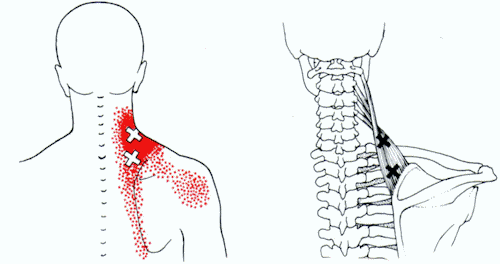
The Levator Scapula is often noted as the “stiff neck” muscle where it is difficult and painful to turn the head and neck. Problems from talking on the phone with the phone held between neck and shoulder, constant looking to one side, uneven sleeping positions, exposure of the neck to a cold draft, stress, a chair with armrests too high or walking with a cane that is too long.

Related to neck strain from chronic poor neck posture, the Rhomboid muscles are often overstretched from a posture with rounded shoulders. Pain from strain of the rhomboid muscle is usually described as a “nagging pain” that is hard to get at. You can see that the rhomboid muscle, positioned between the shoulder blades, is not an easy muscle for self treatment.
Self massage techniques can be done using some of the tools recommended at the bottom of the page, or you can use a tennis ball while lying on the floor or even against a sturdy wall. A moist heating pad or a hot shower can provide heat therapy to relax the muscle. Posture awareness, ergonomics and our effective neck exercises are crucial for long term relief and will further help reverse the pectoral muscles in the front which shorten with the round shoulder posture.

The Sternocleidomastoid muscle (SCM) is a bit complex. It can cause neck pain and frequently results in headaches. The sternocliedomastoid muscle can become strained with turning the head to one side when reading in bed, usually towards the light, from looking up or working orverhead a lot. Strain can also occur from something as simple as shirt collar or tie that is too tight. Sleeping with the head positioned incorrectly can result in waking with a stiff neck, so using supportive pillows is very important.
Specific muscle therapy to the tender areas of the SCM muscle can help reduce neck related headaches as well as pain intensity. Spasm of this muscle can bend the head towards the affected side (ear towards shoulder), and turn or rotate the head to the opposite side. This is a major muscle involved in torticollis. Therapy can be done while stretching the opposite way of spasm. The muscle is easy to feel and reach.
- A 2021 study in Musculoskeletal Science & Practice showed that stretching and massage applied to the sternocleidomastoid muscle can reduce pain, disability, and increase endurance and range of motion in individuals with chronic neck pain.

The Trapezius muscle has 3 parts which stabilize the neck. Problems are associated with a fall or whiplash type injury and sitting in a chair with no armrests. Also, if the armrests are too low or if the arms are short in relation to the body, activation of sore areas can arise in the upper part of the muscle. Holding the arms in front of the body for long periods of time as in driving with both hands on top of the steering wheel can irritate the middle part which is also associated with the round shoulders noted in poor neck posture.
The lower part can be strained by prolonged bending and reaching forward while sitting. Don’t have a keyboard too high, check that a bra strap is not too tight and that a pocketbook strap is not too heavy, use a speaker phone and make sure you have proper elbow support. This muscle is particularly sensitive to psychological stress. Chronic neck pain from this muscle is called trapezius myalgia trigger point therapy and strengthening exercises can help.

The Posterior neck muscles (Semispinalis and Multifidi) are often involved in “pain in the neck”. Problems often cause pain when bending the head forward more than backward or side to side. Usually caused by sustained holding the neck forward when reading, writing, driving and other activities. These muscles are heavily involved with poor neck posture and usually responds well with massage and heat along with active neck exercises, proper pillow support and traction.

The Splenius muscles attach to the neck and the head and can cause an “ache inside the skull”. They can be strained by holding the neck in a forward, crooked position for prolonged periods. They are especially vulnerable when tired and exposed to a cold draft. They respond well to moist heat and neck supports
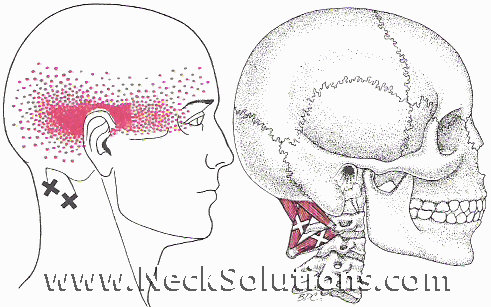
The Suboccipital muscles. Strain can be caused by problems like poor posture, overuse or stress. There is pain on motion which may also be in the shoulder of the same side. The headache pain is mild to severe with no throbbing sensation and may change when pressure is applied to the muscles. The headaches may last from a few hours to a few days or even weeks. Usually responds well to targeted neck exercises, posture correction, stress reduction, and treatment of the area where the muscles attach.
Treatment For Neck Strain
In general, for relief of pain, use nonsteroidal anti-inflammatory agents (NSAIDs) like Ibuprofen and other analgesics. Moist heat is important – not dry heat, you can take a hot shower for 10 – 15 minutes, run a towel under hot water and place on the neck or the popular moist heating pads which can also provide support for the neck to help relax the muscles during application. Massage is also a good method for pain relief and it should be light massage at first with the pressure going from the top of the muscle and down. There should be gradual relief. If no improvement is noted or the pain gets worse, see a doctor.
A great method of self massage is to treat specific areas of muscle strain known to cause certain pain patterns when aggravated as part of chronic neck pain. Use one or two fingers to apply a steady tolerable pressure for a minute or two. Then use similar pressure while performing a circular movement with your fingers for another minute or two. For areas that may be hard to reach on your own try the some of the great muscle therapy tools to avoid strain while treating neck muscle strain. In the above examples, the “X” is the area to treat and the area of most pain, while the red areas are referred pain associated with the main areas of strain.
Interesting Facts
- A 2015 review study in the Journal of Manipulative & Physiological Therapeutics found that spinal muscular trigger points are most common in the neck. Of these, the most frequent areas of the cervical spine were the trapezius, levator scapulae, and suboccipital muscles. Some underlying features noted were an acidic environment, high inflammatory substances, stiff muscular tissue, higher levels of resting muscle activity and lower contraction forces.
- A 2012 study in the European Journal of Physical and Rehabilitation Medicine found that nerve compression or cervical radiculopathy is frequently associated with trigger points. Nerve irritation was noted more frequently in those with radiculopathy from central disc herniations, and may complicate recovery. Findings were confirmed by MRI, and conservative treatment at 2 weeks, decreased that activity of trigger points by 50%.
- A 2002 review in the American Family Physician journal indicates that trauma and micro-trauma can cause trigger points and that trigger points may relate to tension headaches, tinnitus & temporomandibular joint pain.
- A 2013 journal issue of The Alpha Omegan indicates management of these areas of neck strain should include controlling factors that perpetuate them, such as posture, poor sleep, stress, body mechanics, and depression.
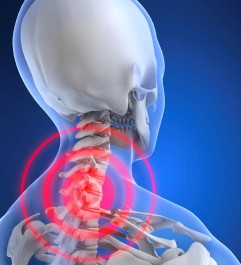

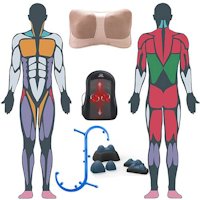 Muscle Therapy Tools
Muscle Therapy Tools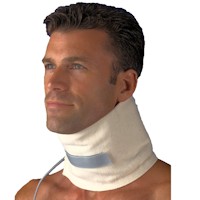 Heat Therapy
Heat Therapy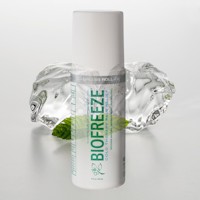 Topical Pain Relievers
Topical Pain Relievers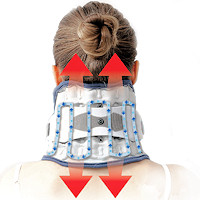 Neck Traction Devices
Neck Traction Devices Cervical Pillows
Cervical Pillows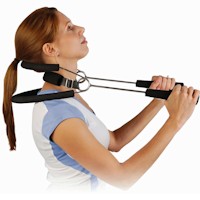 Neck Stabilization
Neck Stabilization